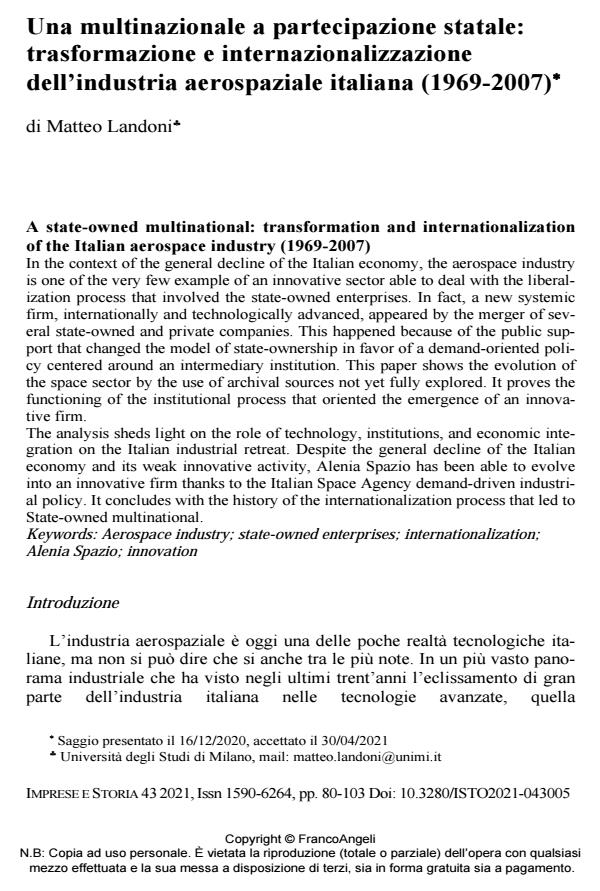A state-owned multinational: transformation and internationalization of the Italian aerospace industry (1969-2007)
Journal title IMPRESE E STORIA
Author/s Matteo Landoni
Publishing Year 2021 Issue 2021/43
Language Italian Pages 24 P. 80-103 File size 290 KB
DOI 10.3280/ISTO2021-043005
DOI is like a bar code for intellectual property: to have more infomation
click here
Below, you can see the article first page
If you want to buy this article in PDF format, you can do it, following the instructions to buy download credits

FrancoAngeli is member of Publishers International Linking Association, Inc (PILA), a not-for-profit association which run the CrossRef service enabling links to and from online scholarly content.
In the context of the general decline of the Italian economy, the aerospace indus-try is one of the very few example of an innovative sector able to deal with the lib-eralization process that involved the state-owned enterprises. In fact, a new sys-temic firm, internationally and technologically advanced, appeared by the merger of several state-owned and private companies. This happened because of the pub-lic support that changed the model of state-ownership in favor of a demand-oriented policy centered around an intermediary institution. This paper shows the evolution of the space sector by the use of archival sources not yet fully explored. It proves the functioning of the institutional process that oriented the emergence of an innovative firm. The analysis sheds light on the role of technology, institutions, and economic inte-gration on the Italian industrial retreat. Despite the general decline of the Italian economy and its weak innovative activity, Alenia Spazio has been able to evolve into an innovative firm thanks to the Italian Space Agency demand-driven indus-trial policy. It concludes with the history of the internationalization process that led to State-owned multinational.
Keywords: Aerospace industry; state-owned enterprises; internationalization; Alenia Spazio; innovation
Matteo Landoni, Una multinazionale a partecipazione statale: trasformazione e internazionalizzazione dell’industria aerospaziale italiana (1969-2007) in "IMPRESE E STORIA" 43/2021, pp 80-103, DOI: 10.3280/ISTO2021-043005